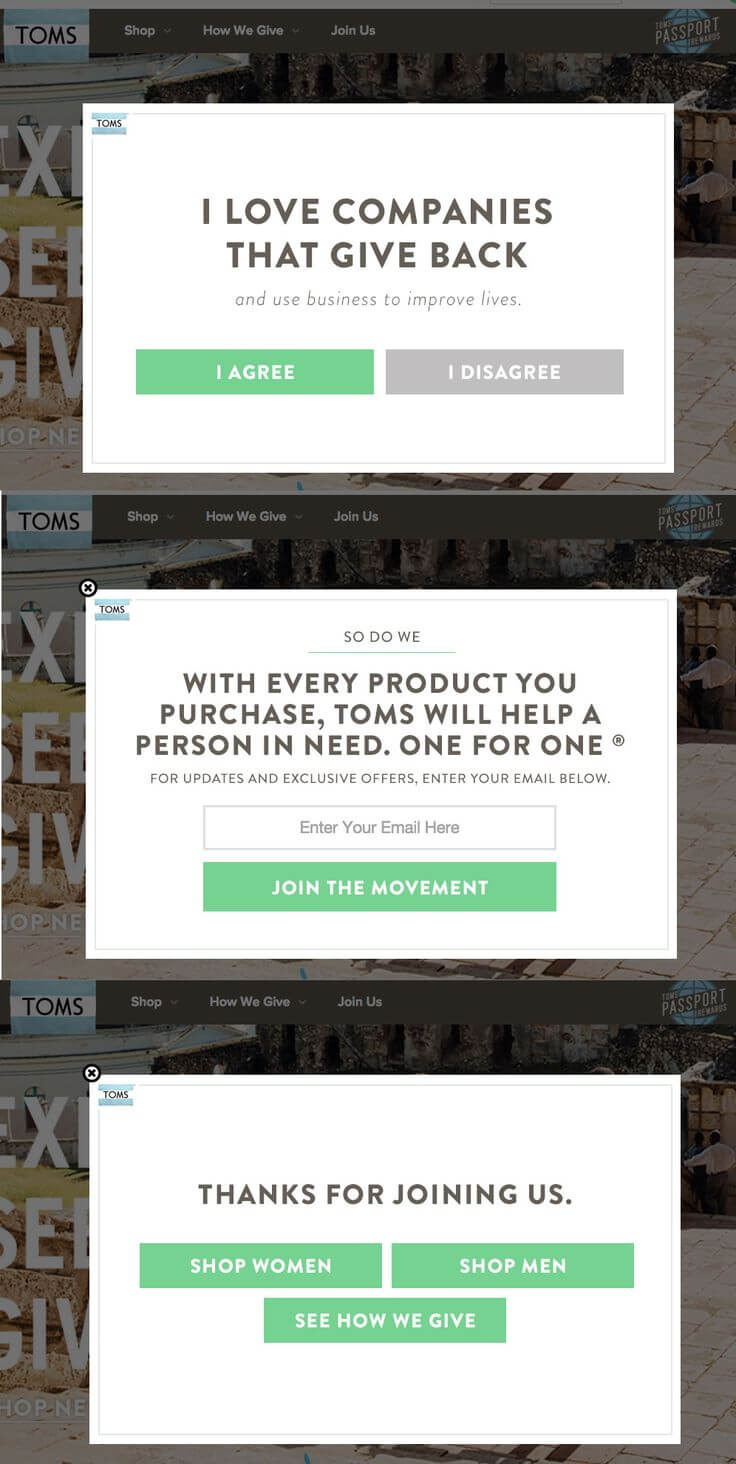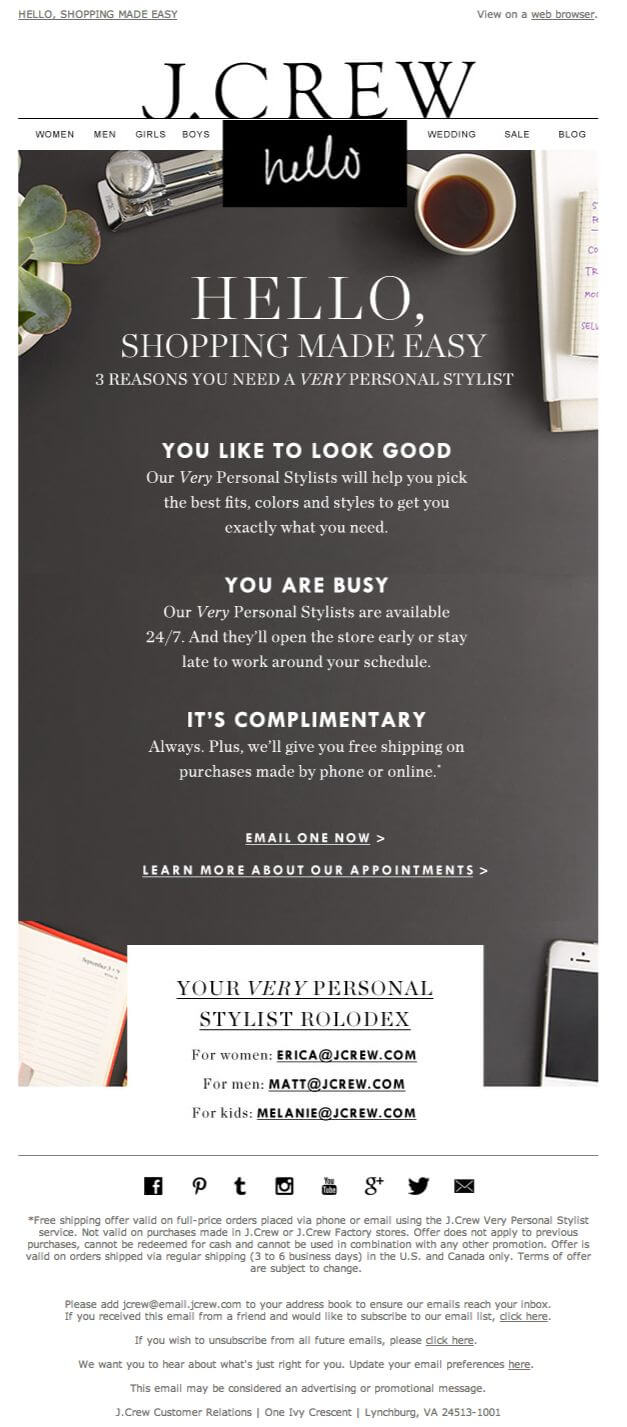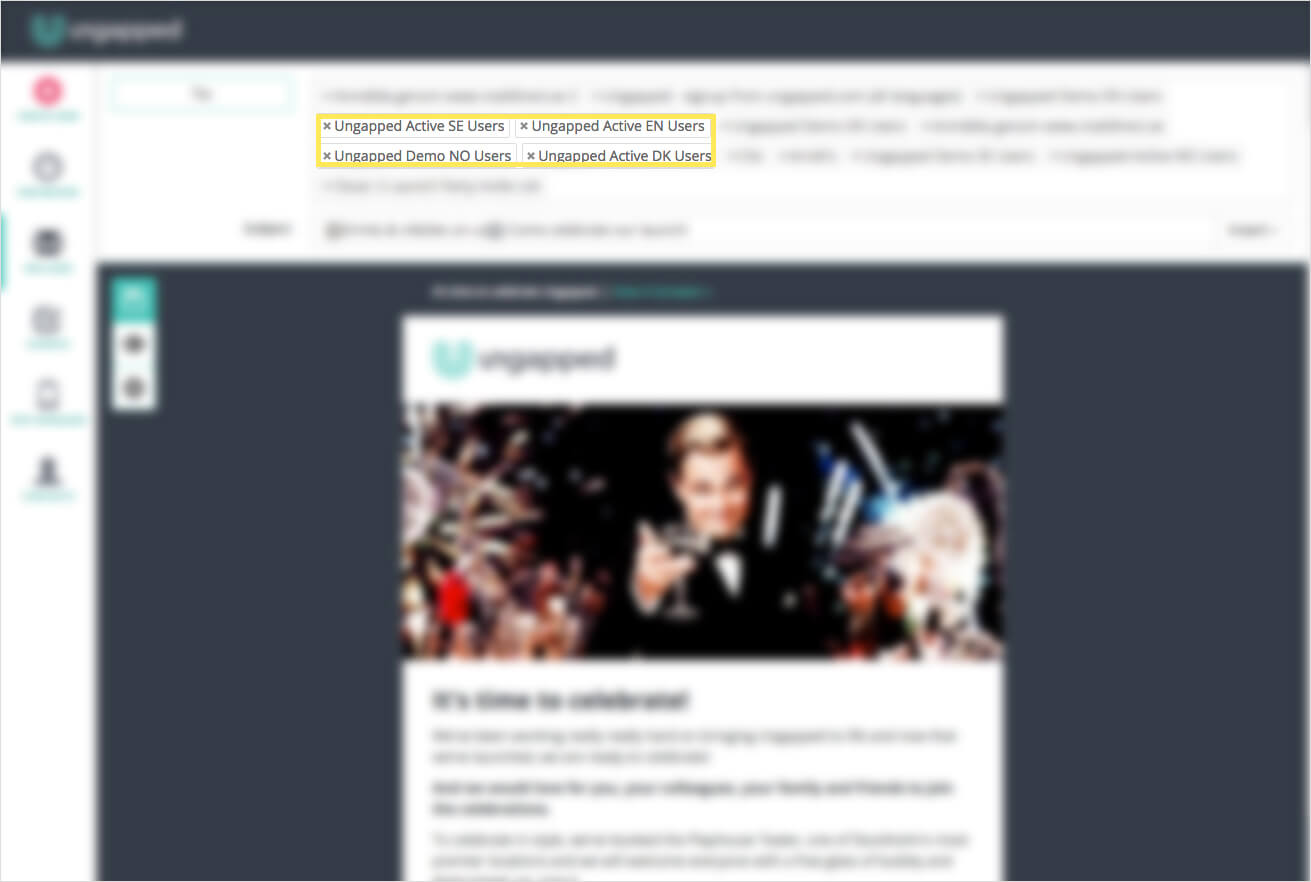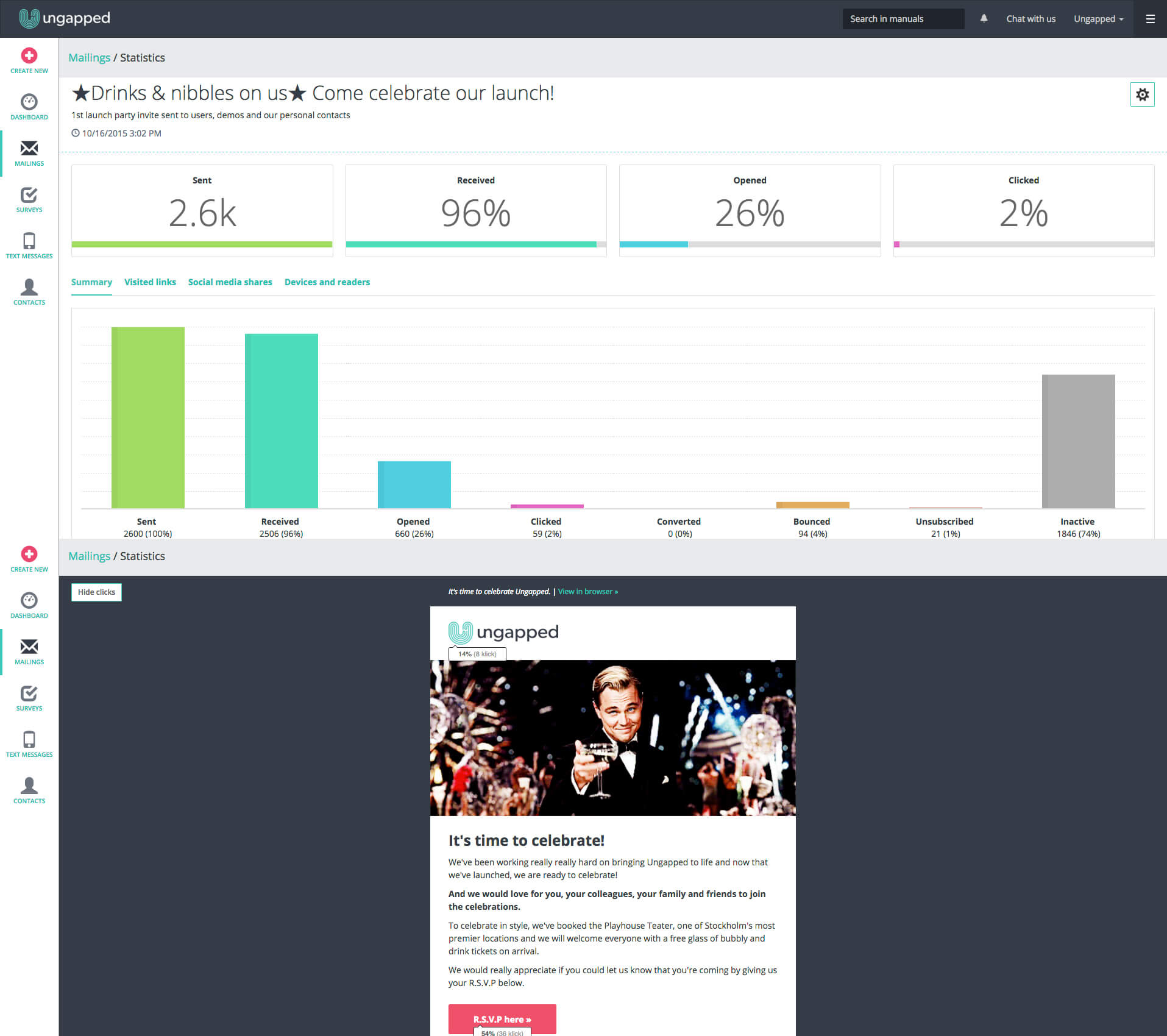
Cheatsheet: Using Email Marketing to Build Your Brand
By Sophia Skinbjerg | sophia.skinbjerg@ungapped.com
Is email marketing really that effective in building a brand? We answer with a resounding ‘yes’! And if you’re looking to do just that, we’ve gone ahead and made quick cheatsheet on how you can use email marketing to build your brand. If you’re short on time, take a look at our 10 bullet points below but be sure to scroll and read more about each individual tip.
Summary of cheatsheet:
– Set goals for yourself
– Use a reputable marketing platform
– Be consistent in your branding
– If you’re not an established brand, offer incentives to join the mailing list
– Automate your welcome process
– Create workflows
– Segment readers
– Make it easy to unsubscribe
– Try not to buy your lists
– Don’t spam readers
Keep reading to learn more about how each tip can build your brand
Set goals
The very first thing that you need to know when using email marketing to build a brand is that you need to set some goals for yourself. What do you hope to achieve with your email marketing? Is it to get new customers? Is it to treat your current customers a little better for increased loyalty? Or is it going to be used for a press-function only?
No matter what your goal is, state what it is, document it and communicate it to either your team members or your boss (if you have one). This way you’ll be more likely to strive to achieve the goal rather than procrastinating and telling yourself you’ll do it later (or for next month’s campaign). For some inspiration, check out this short TedTalk.
Use a reputable email marketing platform
If after setting some goals for yourself you notice a gap between what your current service provider offers you versus what you want to achieve, either look at upgrading your account or start shopping around for a new, reputable email marketing platform or service provider.
Since each platform is different, you might need to try a few before you find the right one. Most providers or platforms will (or should) have a free account available which is less feature-rich than paid accounts.
Sign up for a free account with us!
Be consistent in your branding
Though you should always endeavor to be creative with your mailing campaigns, subscribers should still be able to recognize who you are when they see you in their inbox.
Use your brand’s name in the same way it’s used across all other channels and be sure to use your brand assets such as logos, color palettes and any other visual identities you have to frame your mailings. It’s up to you where you place such assets but the header is always a good start if you’re only just starting to use email marketing for your brand.
For some really helpful and easy to implement tips, read our post Design Tips for Email Newsletters.
Offer incentives to join the mailing list
This is particularly useful if your brand isn’t yet well established or you’ve just started email marketing for your brand. Since readers might not be so familiar with your business (and as a result your products or services), offering incentives to join your mailing list can be an effective way to build your brand.
Are you new to email marketing? Read our guide on what you need to know.
Incentives don’t necessarily mean giveaways or discounts either – they can also be knowledge-based. For example, instead of having a simple signup form on your website or blog, you could include a short accompanying text that illustrates what benefits the reader will get should they subscribe. Some basic but fun examples include; “become a golfing pro”, “be a copywriting whiz” or “be the office media mogul”. Check out the example below (which has become an all-time favorite of mine):
Automate your welcome process
One of the simplest things you can do to build your brand through email marketing is to automate the welcome process.
What this means is that when you capture the email of a new subscriber, an automated welcome process that contains at least one mailing is fired off as soon as they sign up. Actual mailing contents might change a little depending on your industry and type of business but the principle remains fundamentally the same.
This usually comes in the form of a ‘Welcome to my business, John Smith’ mailing which includes any important user information (user names, passwords, log in details etc) and some basic ‘how-to’ guides. As well, it’s not uncommon to extend this automated welcome process to include two or more mailings, in fact, it’s recommended.
If you don’t have this in place, your new signups may be left wondering whether they successfully registered or signed up at all. Sure, this might not seem like a big deal but if you consider that a confused subscriber might just navigate somewhere else (a.k.a your competitor), you may have potentially lost a customer.
Create more workflows
Once you’ve automated your welcome process, start making more workflows!
Though the possibilities really are endless, different types of workflows will depend entirely on your business and customer journey. Some common examples of workflows include sending weekly blog roundups, product specials or discounts, product or service upsells, or invitations to follow brands on social networks. Remember that workflows don’t always need to be for your new subscribers – creating workflows for your current customers is also a strategy to either upsell or foster higher loyalty. Check out this great example from J.Crew:
Creating workflows is a feature that should be offered by most email service providers or platforms but amount or complexity might be restricted based on your subscription level. Check with your provider to be sure what options you have.
Interested in setting up a workflow in your Ungapped account? Just shoot an email to hello@ungapped.com
Segment your readers with lists
When you’re using email marketing to build a brand, it is absolutely essential that you segment your contacts.
And this means more than just lists of ‘customers’, ‘not customers’ and ‘prospective leads’. You must be able to further divide this into different personas and where these personas are in the customer journey. Extra demographics like geographic location, language and device might also influence your segmented lists. Always an eye on how your subscribers engage with your mailings and create new segments should you recognize new patterns emerging in groups of contacts.
Make it easy to unsubscribe
It might sound like the opposite of what you’re trying to achieve when building your brand but it really is important to provide an unsubscribe link or button in each and every one of your mailings. The reasons are two-fold:
1. It is mandatory to include unsubscribe options by law
2. Having people voluntarily unsubscribe from your mailings can be beneficial for you too. Let me explain a little further.
If we kept every contact we ever had, our databases would be full of redundant contacts that really have no conversion potential. Continuing to keep including these emails in our lists actually harms our efforts by increasing our spending but lowering our conversions.
It’s up to you where in the mailing it is placed but it is best practice to place it in an area that can be easily found by the user. The unsubscribe process should be easy and straight forward to follow – attempting to make it more difficult for readers to unsubscribe is only going to frustrate them and decrease satisfaction with your brand.
Don’t spam readers
Though we actually encourage regularly mailing your contacts you have to be careful not to spam your subscribers. This will likely vary between brands but it’s important you know what’s regular contact and what’s annoying.
In order to know what your subscribers find annoying or spammy, pay close attention to your insights after sending a mailing. How many have unsubscribed? What was behavior like before unsubscribing? If your subscribers previously converted through other mailings but now unsubscribed following a series of mailings, you might be able to assume that they found it spammy.
Can’t see these insights on your current platform? Check out our rich insights available on the Ungapped platform.
Try not to buy your lists
Though it can be really tempting to buy a bunch of contacts and send 10,000 mailings to 10,000 potential customers, it’s not the most efficient way to obtain contacts – nor may it be legal where you are.
Attracting new customers online via high-quality content production, paid search, social media, and of course organic email subscriptions is always going to be more worthwhile than buying and selling to a list of a thousand unknown people that will likely never have heard of your brand.
Ready for the next post?
Read 6 Reasons Why The Summer Is a Great Time to Revisit Your Email Strategy.



